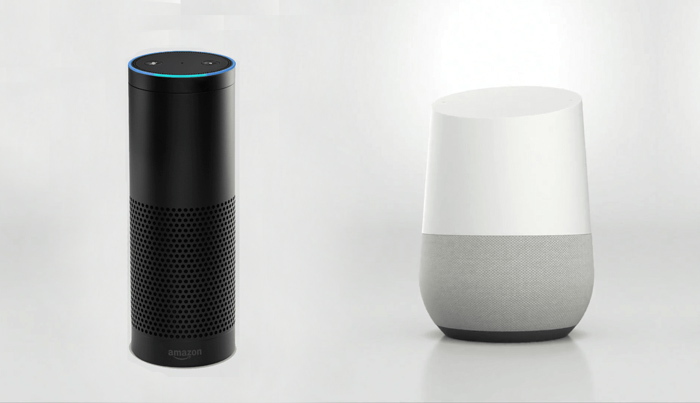Recent advances in technologies, such as Amazon’s Echo and Google Home offer voice activated virtual assistance for people with disabilities.
Table of Contents
ToggleThis technology empowers disabled users by providing digital assistants accessibility in a new way that is a game- changer, improving one’s quality of life and making challenging tasks possible.
Let’s Review Each of the Voice Activated Assistants.
Amazon’s Echo “Alexa”
Alexa was developed in 2014 and released in 2015. It’s a virtual assistant using Artificial Intelligence (AI) that was developed and produced by Amazon. The voice-activated personal assistant home speakers Alexa can be used to create lists and reminders, maintain appointment calendars, place a phone call or order from Amazon, provide news and weather updates, play music and answer queries.
Through the interconnectivity with Smart Devices, you have the ability to create a Smart Home utilizing the AI feature of Amazon Echo and Alexa to control a multitude of household devices such as thermostats, lighting, security systems with a simple voice command. These functions provide independence for people with disabilities .
Here are some Alexa features people with dyslexia, ADHD, and a reading disability will find helpful.
- Can Manage Your Calendar and set up reminders. Setting reminders is one of Alexa’s simplest features
- You can set it up for medication reminders
- Listen to Audio Books amazon echo audiobooks
- Set up To-Do lists
- Control home appliances and TVs
- Set up alarms
- Control your lights
- Listen to the latest breaking news
- Fitnes, mindfulness meditation
- You can say Alexa how to spell a word and it will spell it for you
Additional Alexa Resources:
Guide to Alexa’s most useful skills and How to Use Alexa.
Google Home
Google Home offers similar features to Amazon’s Alexa as Google home app and Alexa functionalities are alike.
Both are virtual assistants (speech recognition) and can play music. Google home was developed by Google in 2016 and enables users to speak voice commands to access services through Google Assistant, the company’s virtual assistant.
Google Home is easier to use
Google Home enables users to speak voice commands to interact with services through Google Assistant, the company’s virtual assistant. Google Assistant’s set-up is more user friendly unlike Amazon Echo’s configuration that can be more challenging as it requires you to learn to use the proper syntax to activate a service or skill.
Watch a funny video conversation between Google Home and Amazon Alexa ordering food Google Home and Alex talking to each other.
Google Home and Amazon Echo recently developed screen devices that enable the user to see a text of a query Google Nest Vs. Amazon Show.
What are Smart-home-devices-for-people-with-disabilities?
Smart Home devices enable people through voice activation to make phone calls, broadcast messages, keep track of schedules and reminders, control their appliances and much, more.
Google Home Wikipedia and Google Home accessibility features
A Smart Home is setup through interconnected devices and automation. Using Amazon Echo and Alexa and Google Home allows you to control household devices with simple voice commands.
Many commercial apps can be used now as adaptive devices and provide accessibility, to physically disabled and learning disabled, dyslexic and visually disabled individuals.
With artificial intelligence (AI) the possibilities are endless
We are beginning to see the emergence of many solutions for all people with disabilities that decades ago was only a dream. These assistive technologies now offer many possibilities to support independence for people with disabilities.




